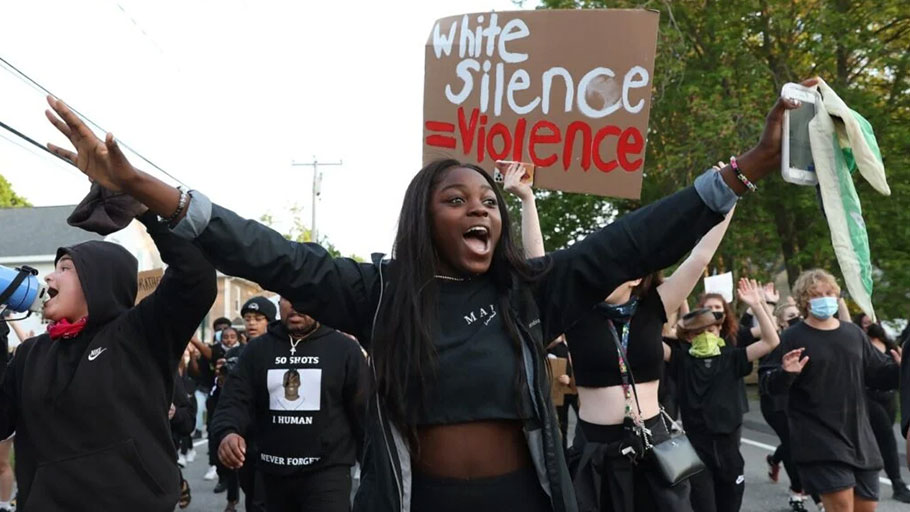Deante Campbell of Sanford joins student protesters during a demonstration June 4 against institutional racism at South Portland Police Station. Derek Davis/Staff Photographer.
Nationally and in Maine, young people of color are leading protests and asking their local leaders to address systemic racism.
Mariam Beshir spent the days leading up to her graduation from Gorham High School organizing a Black Lives Matter march in her town.
She wanted to celebrate. But she knew that Tamir Rice should have graduated from his own high school this year if a white police officer had not shot and killed him in Cleveland when he was 12 years old.
So the day after her festivities, she went back to work, posting a map of the finalized route for that week’s march in a local Facebook group.
“Having the marches around the same time as my graduation also reminded me that there are so many Black mothers and fathers out there who won’t be able to see their children walk across a stage and receive their diploma whether it be because of systematic oppression or police brutality,” Beshir, 18, said. “This all, of course, motivated me even more.”
Young people have long been drivers of social change in the United States.
Four Black teenagers staged the first sit-in at a North Carolina lunch counter in 1960. Their protest was quickly modeled in other college towns and inspired a student activist group that was integral to the civil rights movement. School walkouts have been a tool for young protesters for decades, among them the 1968 walkouts at Los Angeles high schools that drew national attention to the Chicano movement and the 2018 national walkout to protest gun violence. An Iowa junior high schooler and her peers wore black armbands to protest the Vietnam War and sparked the Supreme Court case that confirmed the free speech rights of students in 1969. In more recent decades, teenagers have been at the forefront of activism about climate change.
Now, they are holding the megaphones at protests over the police killing of George Floyd, directing the chants of “Black Lives Matter” and “No Justice, No Peace.” Across the country and in Maine, young Black people are taking the lead, bringing the movement to their police departments and school boards and neighbors.
Six teenagers of color talked to the Portland Press Herald/Maine Sunday Telegram about their experiences with activism and their next steps.
Deante Campbell, 17, Sanford
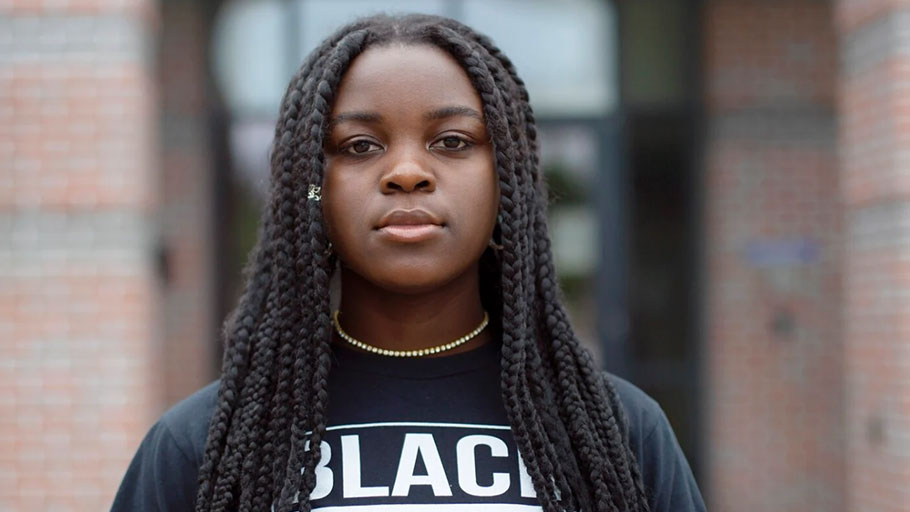
Deante Campbell helped organize a Black Lives Matter protest in Sanford and participated in other protests in Portland and surrounding communities. She spoke about her experiences with racism in front of thousands of people at Portland City Hall. Derek Davis/Staff Photographer.
Deante Campbell knew her mom would be worried.
But she and her friend decided to push their way to the front of their first Black Lives Matter protest in Portland last month. Once they got there, Campbell took the microphone to talk about her own experiences as a Black teenager in Maine.
“If I’m going to get in trouble for going to protests, I’m going to make it count,” Campbell remembered thinking.
Campbell emigrated from Jamaica to the United States when she was 10 years old, and her family has lived in Sanford since. She studied Black history in America in school, but she also began to do research and watch documentaries on her own time. That learning gave her new understanding of her past experiences – a classmate using a slur unchecked during an eighth-grade lesson about Africa, white teenagers posting blackface photos on Snapchat on Halloween.
A local group called Project CommUnity sponsored the protest in Sanford, but Campbell and two other teenagers took the lead at the event. About 400 people gathered in a local park and marched to the nearby police station. The next day, a man shared a photo of Campbell at the protest on his Facebook page, saying that his wife is a local police officer and accusing protesters of using obscenities against her at the rally. In the comments on the post, which has since been deleted, another person suggested that Campbell should have been maced.
“That untrue information spread on Facebook and affected my reputation,” Campbell said. “I felt unsafe due to this response because I was criminalized and I was getting serious threats. My parents were scared that someone would hurt me.”
But that fear didn’t stop her. She and her fellow organizers recently met with local leaders to deliver a list of recommendations for Sanford High School to be more inclusive and safer for Black students. Campbell, who will be a senior there in the fall, said she feels the most important proposal is a more robust curriculum about Black history in America.
She remembered visiting a shipyard on a middle school field trip and only learning later that vessels from Maine were used to transport enslaved people.
“Ignoring the truth about the pain inflicted on Black people and people of color in America will not end the suffering,” she said.
Fiona Akilo Stawarz, 17, South Portland
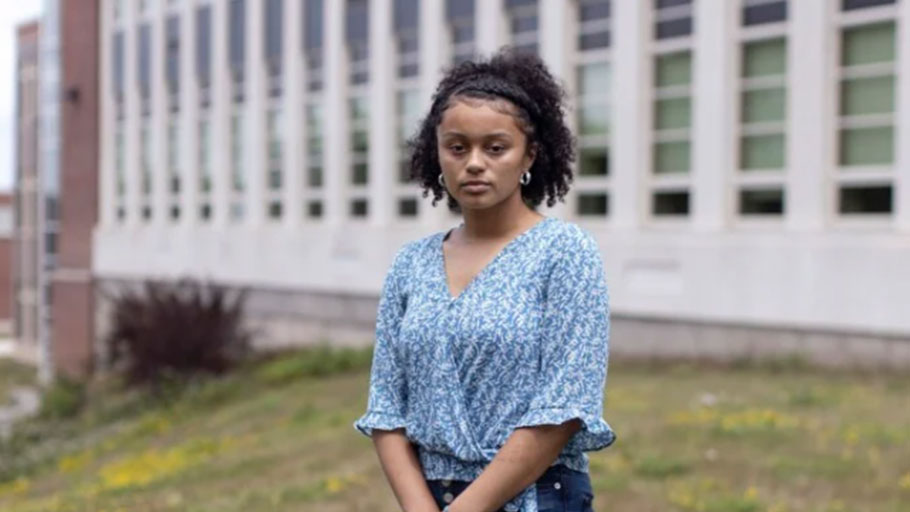
Fiona Akilo Stawarz poses for a portrait outside South Portland High School, where she will be a senior in the fall. Akilo Stawarz helped organize a Black Lives Matter protest in South Portland in June and is also involved in fighting racism and inequity at her school. Brianna Soukup/Staff Photographer.
Fiona Akilo Stawarz thought maybe 30 people would show up.
Instead, the crowd that gathered outside South Portland High School in early June was 300 strong. People wore face masks and held handmade signs and chanted as they marched to the nearby police station.
“It went by like in a flash,” Akilo Stawarz said. “Everything felt like it was moving in a really quick speed, and part of me wanted to slow everything down, so we could really be in the moment and appreciate that this is beautiful.”
Her first protest had been just days before in Portland, but the rising senior was not new to activism.
Akilo Stawarz used to put all her energy into sports, like volleyball and basketball. Then her priorities changed when she tore her ACL and was diagnosed with Type 1 diabetes. She still plays sports, but she began to throw herself into social justice work at South Portland High School.
She got more involved with the Culture Club, attended the Seeds of Peace Camp and completed a summer internship at Maine Initiatives. She participated in a panel discussion with other young leaders at this year’s annual dinner on Martin Luther King Jr. Day in Portland. During her upcoming senior year, she wants to start a Black student union and push her school to hire more teachers of color.
“My friends, we’re all embedded into social activism, social justice within this community,” she said.
The news about George Floyd’s killing gave her a feeling of hopelessness and powerlessness, and she was wrestling with those emotions when she learned about the South Portland protest on Snapchat. Akilo Stawarz got in touch with the other organizers and sourced a megaphone and other supplies through friends at Maine Youth Justice.
When it was her turn to give a speech that night, she had a message for the hundreds of people in the crowd.
“Protesting is a beautiful thing,” she said. “But I want to see support from all those people who were out there. When we get back during the school year, I want to see them at civil rights team meetings. I want to see them at school board meetings, giving their opinions about policies that are inequitable. We can’t just protest and be angry and do nothing with that.”
Josh Wood, 15, Sanford
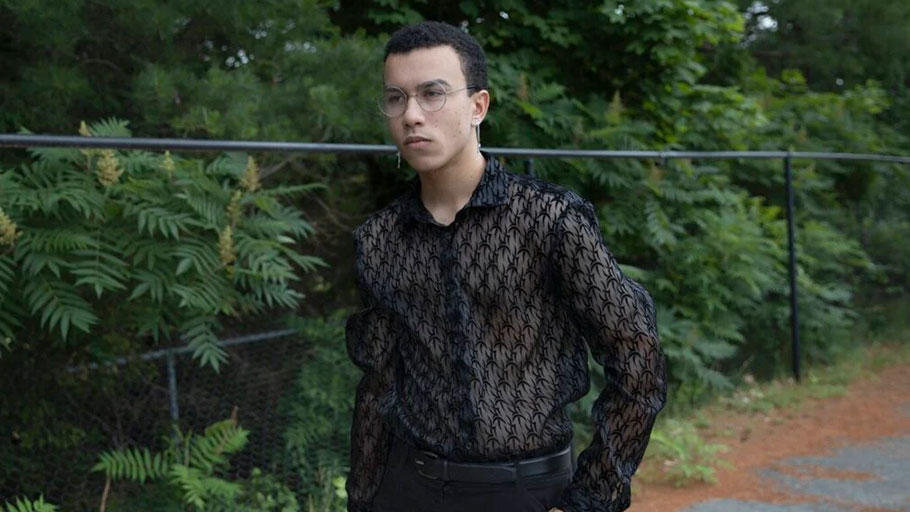
Josh Wood, a rising high school senior, helped organize a Black Lives Matter protest in Sanford. Derek Davis/Staff Photographer.
For Josh Wood, activism began in climate change.
He works with Maine Youth Climate Strikes and helped organize a forum on environmental policy for U.S. Senate candidates earlier this spring. As he became more active on those issues, Wood learned that people of color are disproportionately affected by air pollution and other impacts of climate change.
“I learned that racial justice is climate justice,” Wood said.
He also learned about the Black Lives Matter movement and began to better understand his own experiences. Wood identifies as mixed race, and he remembers how it felt to have the darkest skin in his elementary school. His classmates would ask him why he looked different than they did and if they could play with his hair. He attends an online school now – he is a rising senior – but he still wants to change the public schools for others.
“I don’t want my family to go through that, especially my brothers and sister and nieces and nephews,” he said.
So he recently started a petition to remove school resource officers from Sanford schools. The Portland Board of Education has since voted to remove those officers from the city’s high schools, and nearly 500 people had signed Josh’s petition for similar action in Sanford as of Friday.
Wood was circulating that petition online in early June when he connected with other organizers for the Sanford protest. He offered to help and ended up with a microphone in hand.
“There’s not that many young Black people in leadership positions in Maine, so I think that was a very important experience for me,” he said.
Younger people are more willing than older generations to push for dramatic change, he said, a trend he has noticed in his activism on both climate and racial justice.
“It’s reclaiming our future,” he said. “Something I’ve learned as a climate activist is that adults are very passive about radical climate action.”
Wood joined Campbell and other organizers in presenting the list of recommendations to Sanford officials last month, and he expects to keep pushing at future meetings. That list included the call in his petition to remove school resource officers from local schools and cited supporting research.
“We don’t need sympathy cards right now,” Wood told those officials. “We need you to commit to change.”
Mariam Beshir, 18, Gorham
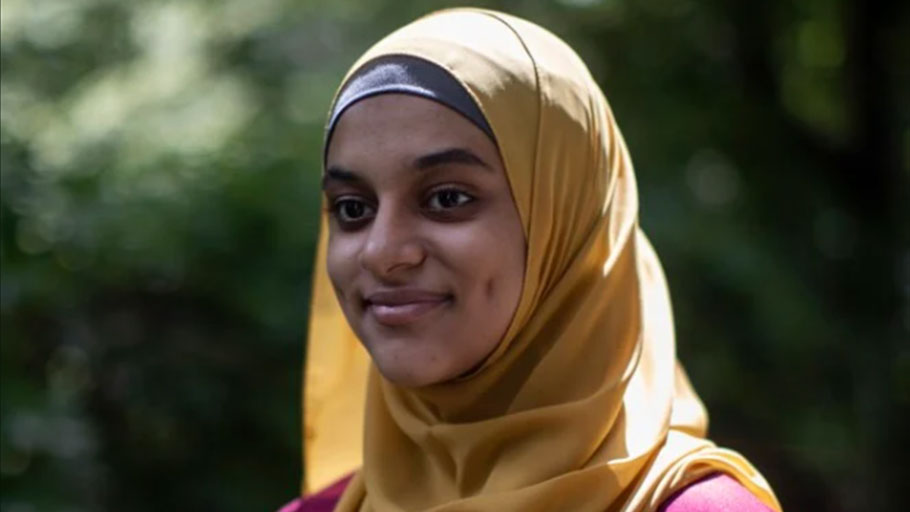
Mariam Beshir, 18, poses for a portrait in Gorham. A recent graduate of Gorham High School, she helped organize and lead the Black Lives Matter rallies in Gorham. Brianna Soukup/Staff Photographer.
Mariam Beshir was in second grade in Gorham, and her friends wanted to play a game.
“’We’ll be the princesses, and you’ll be the maid,’” she remembered. “At the time, I didn’t think anything of it, just, ‘I guess there’s no more princesses for me to be.’ Looking back at that now, I realize that she wasn’t intentionally being racist. This was something that had been ingrained.”
Beshir, whose family is from Sudan, learned about the Black Lives Matter movement as a freshman and joined her high school’s civil rights team. Last year, they developed a workshop where teachers could hear directly from students who had experienced racism or discrimination in the school. In recent weeks, she and other students presented their school committee with their own list of suggestions for changes to curriculum and policies.
“I don’t think they knew we could find the police budget online,” she said. “I think they realized that we know how to use the resources that we have, and we’re not just teens who sit in their rooms and play video games all day. We actually want to create change to the oppression that they’ve let slide all these years.”
When Beshir attended her first Black Lives Matter march in Gorham, she immediately wanted to be more involved in the movement. She quickly became one of the lead organizers for recurring marches in June. The gatherings have been peaceful and positive, she said, and she was alarmed by Facebook comments from a person who suggested that he wanted to drive his car into the protesters.
She has managed the stress of organizing by praying and taking days off with her family. She wants to stay involved even after she starts at Southern Maine Community College in the fall. Beshir planned to eventually move to a more diverse city, but now she thinks she will stay in Gorham until she feels some change is made.
“When people only come to the first protest, take pictures with their sign and go back, it shows they were only participating because it was a trend,” she said. “I believe we only have one shot at this, and we need to keep going on with the momentum. Otherwise, we’re going to be out here protesting next year and the year after that and after that.”
Olivia Levine, 17, Sanford
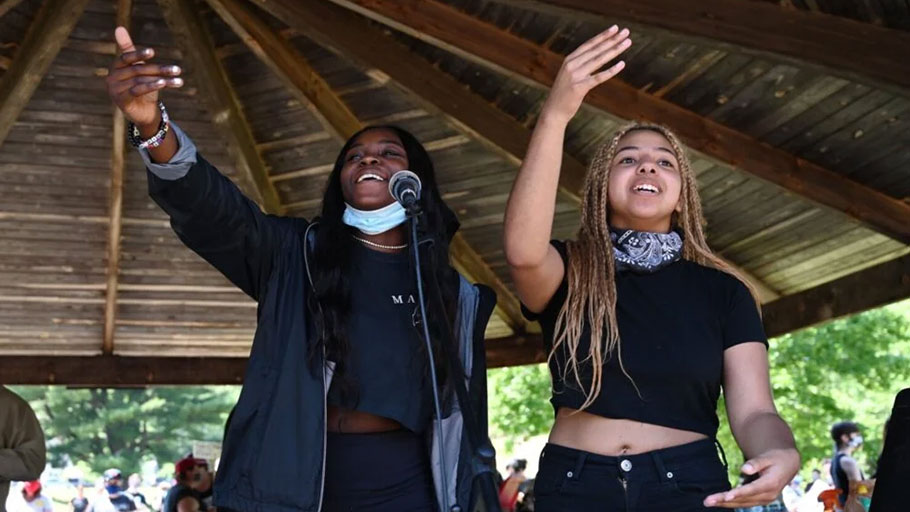
Deante Campbell and Olivia Levine, right, during the Black Lives Matter protest in Sanford on June 6. Shawn Patrick Ouellette/Staff Photographer.
The guns scared Olivia Levine. But more than that, they embarrassed her.
With Campbell and Wood, Levine was one of the leaders of the June protest in Sanford. Their event drew 400 peaceful participants, including many teenagers. It also drew armed observers, including a couple of white men standing on the sidewalk holding guns, as well as other groups dressed in body armor.
“I’ve lived in this town my entire life,” she said. “The fact that so many people were standing there (in an intimidating way), that was super embarrassing to me.”
Levine said white Sanford residents often do not see racism as a local issue, but her own experience has proven otherwise.
She remembered standing in the lunch line in third grade, when a group of white boys behind her used a racial slur to talk about her. Even though she didn’t know exactly what the word meant, she already understood that it was related to her skin color.
As she got older, she struggled with self-esteem and wished for a Black mentor in her schools. She also attends an online program now, and she said her experience as a Black student was one of her reasons for leaving the public school.
“I had problems with how I saw myself for years,” she said. “Sanford schools didn’t help me fix them. I had to fix them.”
When it was her turn to speak at the rally, Levine directed her message to the white people in the crowd.
“I’ve seen a lot of white allies trying to speak over Black voices and make the movement their own,” she said. “It’s not about white people right now. I wanted them to know it’s our movement, that they were there to listen.”
Levine will be a senior in the fall. She isn’t sure exactly what she wants to do next – she likes to write poetry, and she has a talent for makeup – but she is sure activism will be part of her life.
“We’re the ones who are still in high school,” she said. “We are the ones who are still dealing with this outdated education system. We’re the ones who are going to have to grow up and keep watching Black people die. We’re definitely taking this movement a lot more seriously because it’s going to affect us directly.”
Kyle Ouillette, 18, Gorham
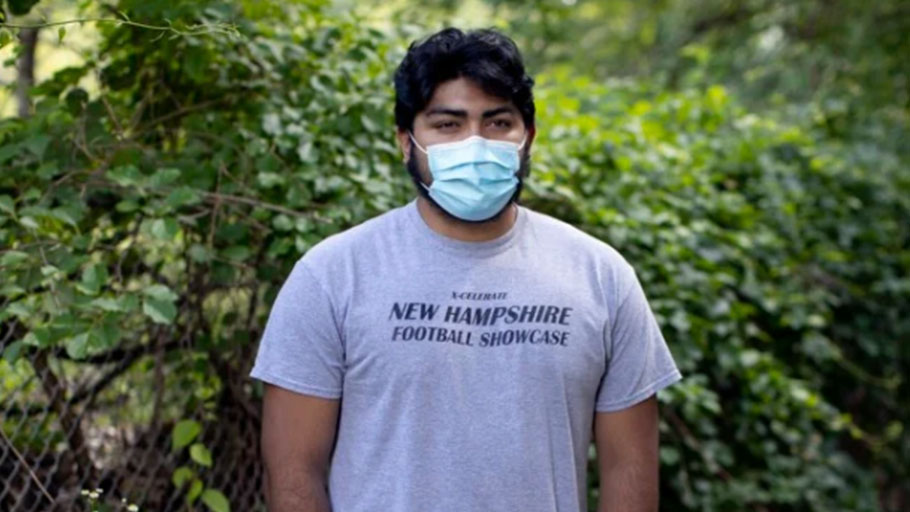
A recent graduate of Gorham High, Kyle Ouillette, 18, helped organize and lead the Black Lives Matter rallies in the town. Brianna Soukup/Staff Photographer.
Kyle Ouillette used to dread picture day.
“When I was younger, I just thought I looked like a sore thumb in that class photo,” he said.
Ouillette, who is Latino, said he often struggled to feel like he belonged among his white classmates. He often thought of Guatemala as his home and the United States as the place where he lived. Even as he moved up to larger and more diverse schools, the feeling of being different has remained.
He remembered this spring when he was sitting in a school parking lot with a friend, eating potato chips and talking. He said a police officer pulled up and almost immediately asked Ouillette if he had drugs in the car. The officer eventually told Ouillette and his friend that he could bring them to jail for violating the governor’s stay-at-home order, but he left without taking any action.
Then the world erupted in protests over George Floyd’s death, and Ouillette heard about a Black Lives Matter march in Gorham. He offered to help because he wanted to make sure people of color were involved. But he described his role as one of support for Beshir and other Black students. He said their experience is still different from his, and he wants to defer to them in this movement.
“One of the biggest pushbacks that we had in the community was this preconceived notion that this is happening miles and miles away from us, and racism doesn’t exist, and this isn’t a problem here,” Ouillette said.
He said he learned more about racism as he got older. He researched American intervention in Guatemala that led to human rights violations – history he never learned in school. He got involved with the civil rights team and attended Seeds of Peace Camp. He realized that jokes he had heard in the locker room were racist.
“A lot of stuff that I let fly, I would definitely not let fly now,” he said.
Ouillette plans to attend Springfield College in Massachusetts in the fall and eventually become an orthopedic surgeon. But he has also been thinking about how he can apply his experience organizing in Gorham to other issues that directly impact Latino people in the United States, like immigration policy.
“Getting my first real taste of activism has me second-guessing where I’m meant to be,” he said.
This article was originally published by Press Herald.

